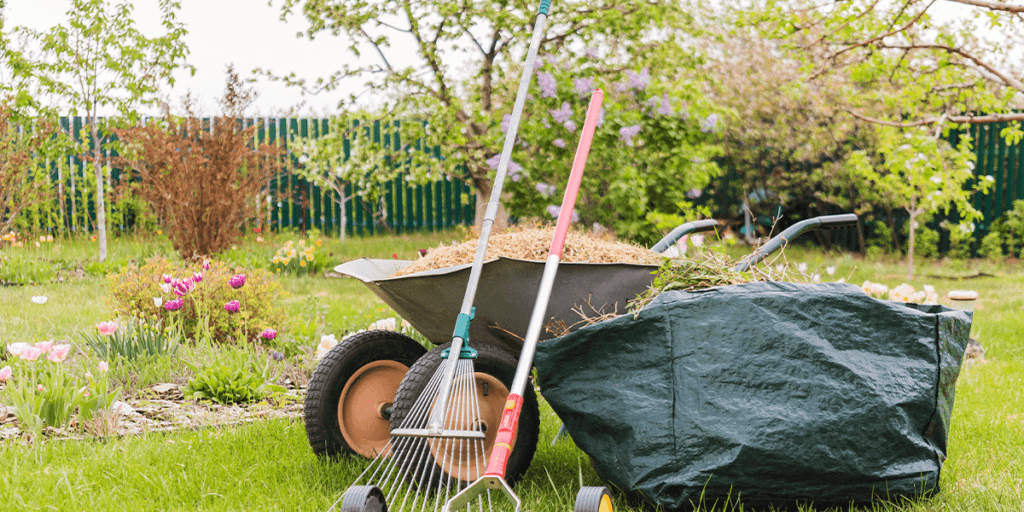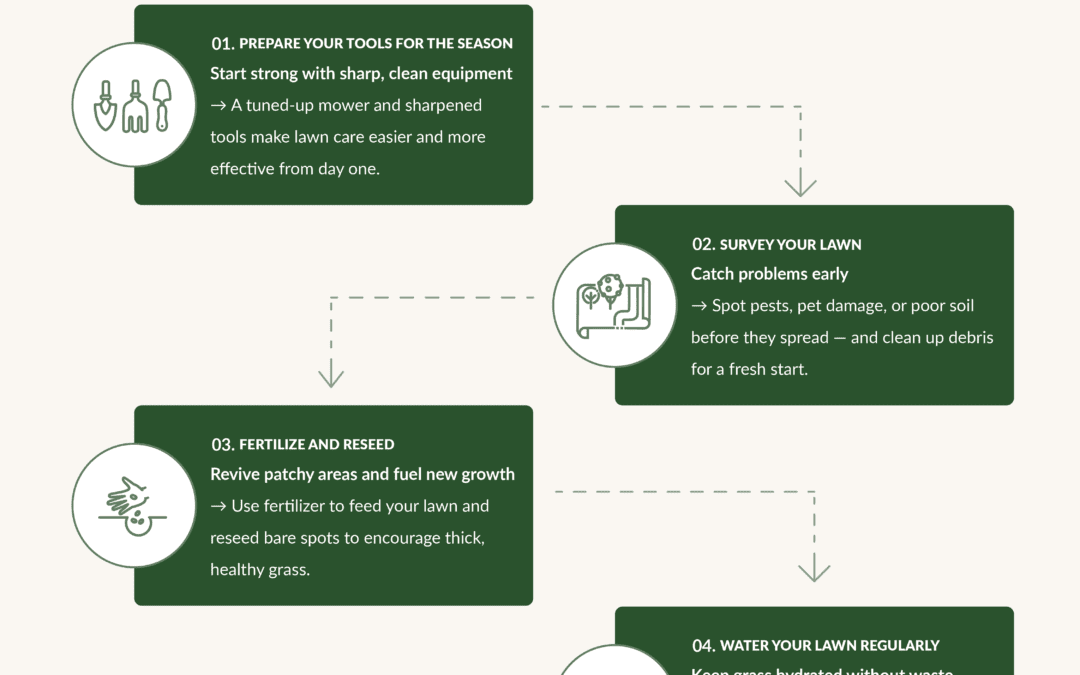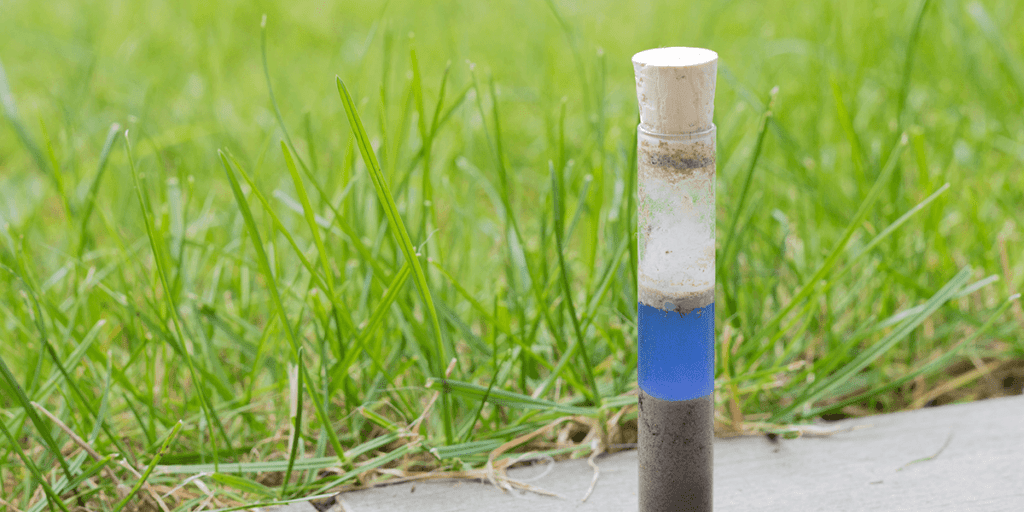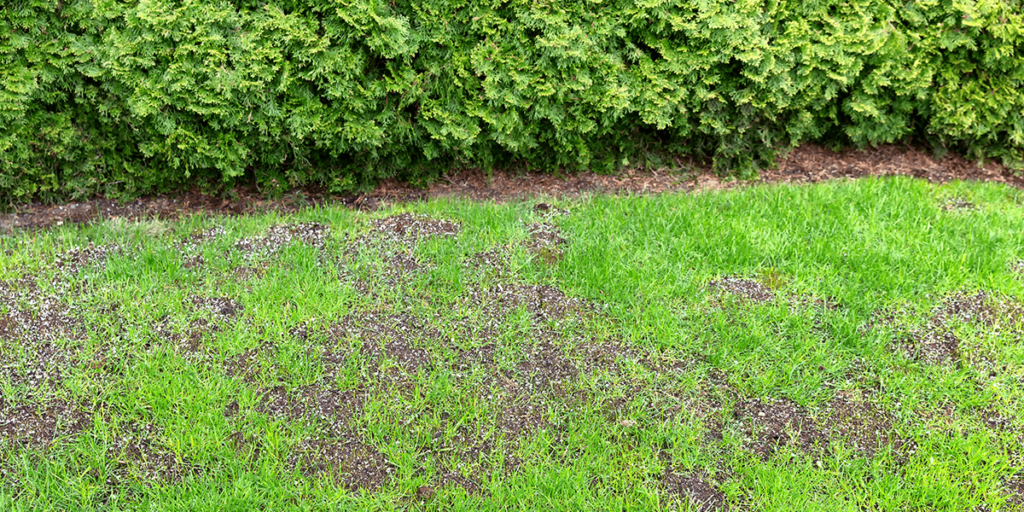After a long winter, our lawns need help perking up for spring! Tackling your lawn care early in the spring is a great way to get the foundation of your yard into shape so that you can focus on your plants and vegetables, and get to relaxing! Here is everything you need to check off your lawn care list this spring.
Prepare Your Tools for the Season
Before you can get to lawn care, it’s a good idea to tune up your tools! Pull out your lawnmower and clean off the dust; make sure your blades are sharp for the season, and that you have enough fuel. We also recommend checking your blade height to ensure that you don’t cut your grass too short. 2-3 inches is a safe height that will keep the roots of your grass protected and allow them to take up space so that weeds can’t invade as easily. If you find a few weeds in your yard, you’ll need sharp tools to remove them, so be sure to get your tools sharpened and sterilized before you get to work.
Survey Your Lawn
Once your tools are ready to go, take a walk through your yard and pick up any stray branches, pinecones, dog waste, kids’ toys, or anything else that might be lying around. Next, you’ll want to survey your lawn for pests, pH levels, and dead spots.
Review your lawn for any pest issues, deal with them right away before they have a chance to spread, and make sure all of your plants look healthy before introducing any new ones to your yard. The last thing you need is to bring home a healthy little plant from the nursery and put it into an infested garden bed!
Finally, look for any dead patches of grass. If you have dogs and there are urine patches, you can flush the areas out with water to help dilute the nitrogen content in the area. Rake away the dead grass, and then you can reseed and fertilize your lawn.
Fertilize and Reseed
For lush grass, we recommend fertilizing in early spring so that your lawn has all the nutrients it needs to start the season off right. Take care not to provide too much fertilizer, as it can stress out your grass. Simply follow the instructions, and your grass will thank you for it! Of course, organic fertilizers are a bit more forgiving with over-application, and they won’t introduce harmful chemicals into your backyard ecosystem.
Now that you have all of your problems addressed and your lawn is ready to grow, you can introduce fresh grass seed to any dead (or sparse) patches in your yard. Be sure to keep your seeds generously watered until they’ve sprouted and are nice and stable in the soil.
Water Your Lawn Regularly
Watering in the spring is essential for healthy lawn growth! We get plenty of rain in the spring, but if it is dry, you’ll need to water about an inch per week. Watering before the heat of the day ensures that your lawn gets all that delicious water before it evaporates in the sun and the heat of the day. If it’s particularly hot outside, you may need to water every day so that your grass doesn’t get scorched.

Dethatch and Aerate at the End of Spring
Dethatching is an important part of maintaining a healthy lawn, as it involves lifting out organic matter that sits between the blades of grass and the soil. Once the thatch layer reaches 1 inch in thickness, it can harbor pest infestations and disease and hinders airflow, water, and nutrients from getting to the grass root system. Use a convex or power rake and work through your yard to remove it.
Aerating your lawn is another critical step that will allow more water, oxygen, and nutrients into your soil. You can rent a machine for this or use a hand-aerator to give your lawn a breath of fresh air. Be sure to save this chore for last so that your lawn has some time to wake up and heal over from winter first.
If you’re looking for spring lawn care near you, visit us at Platt Hill Nursery. We’d be happy to help you troubleshoot any repairs you need to complete and recommend the best products for your lawn care.
Platt Hill Nursery es el principal centro de jardinería y vivero de Chicago.




